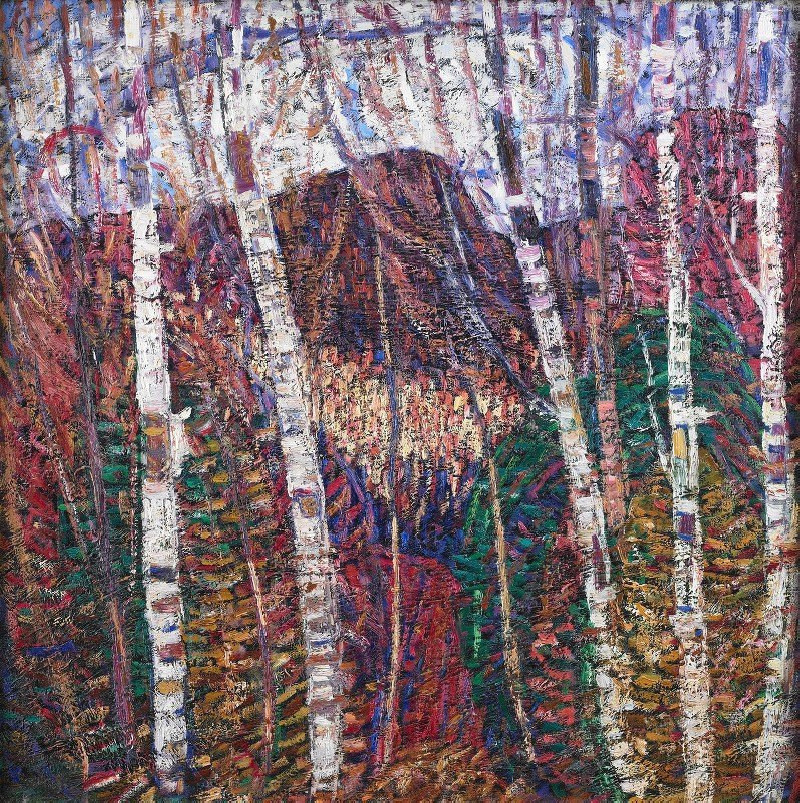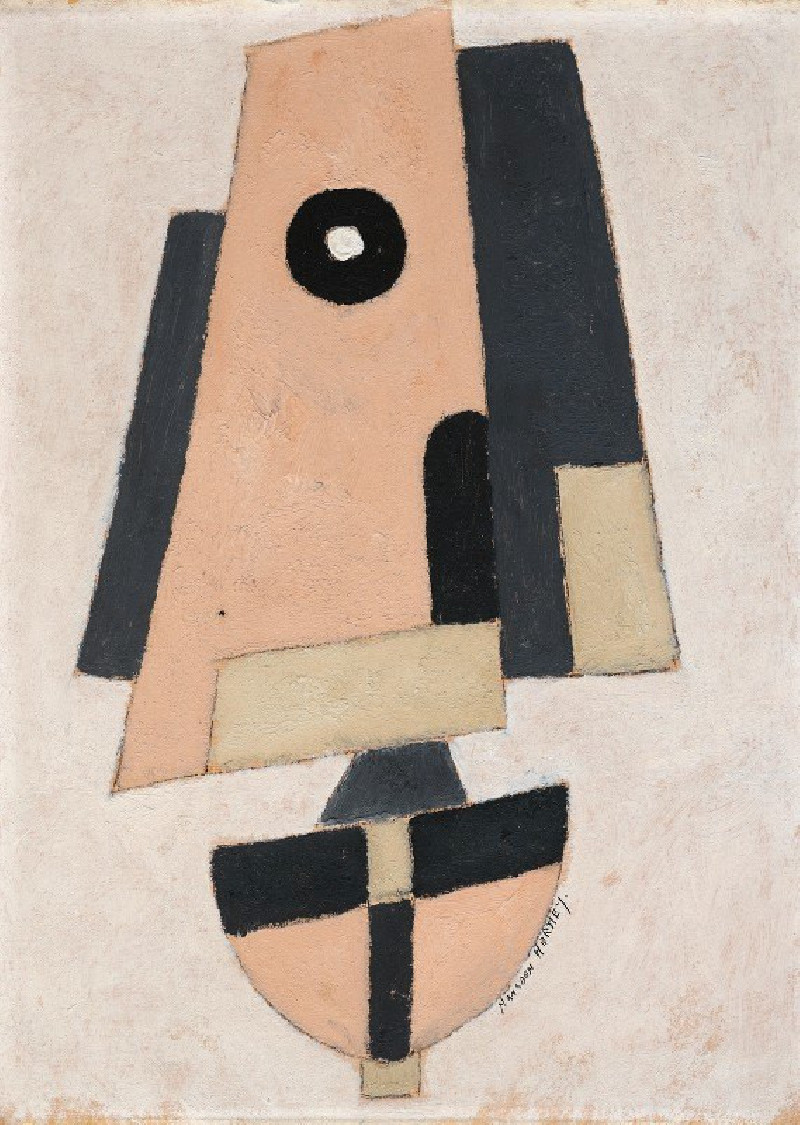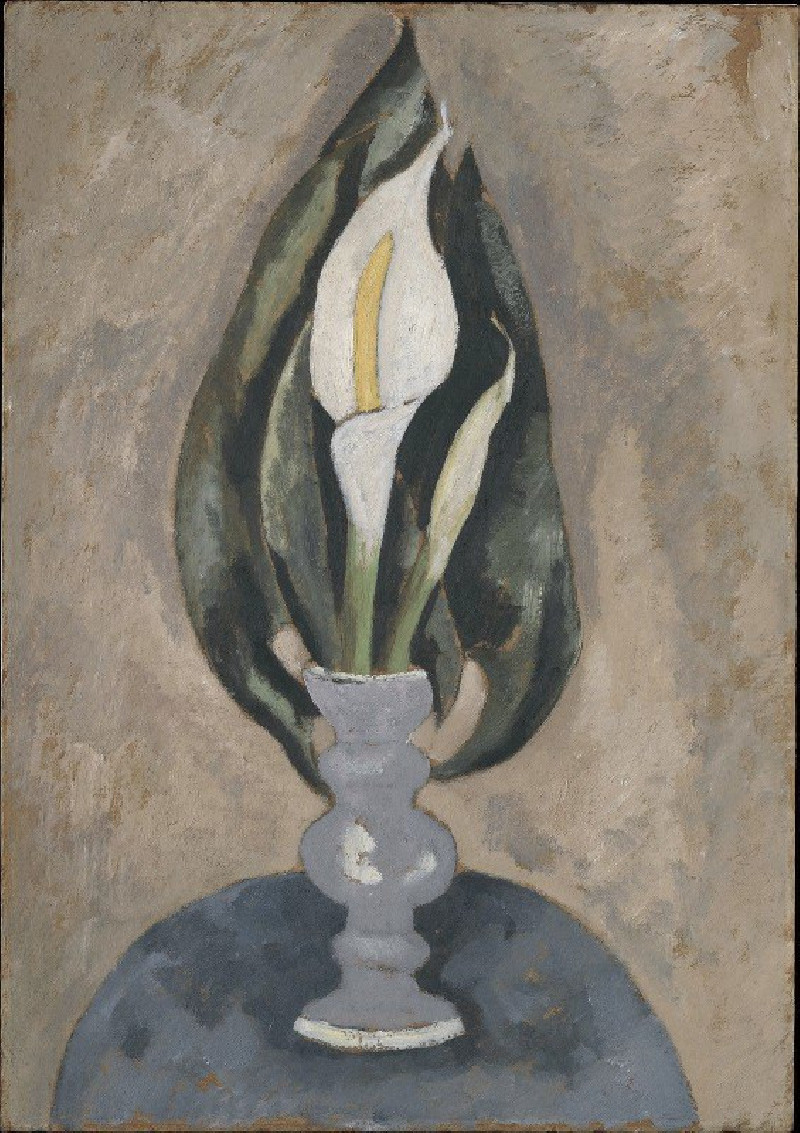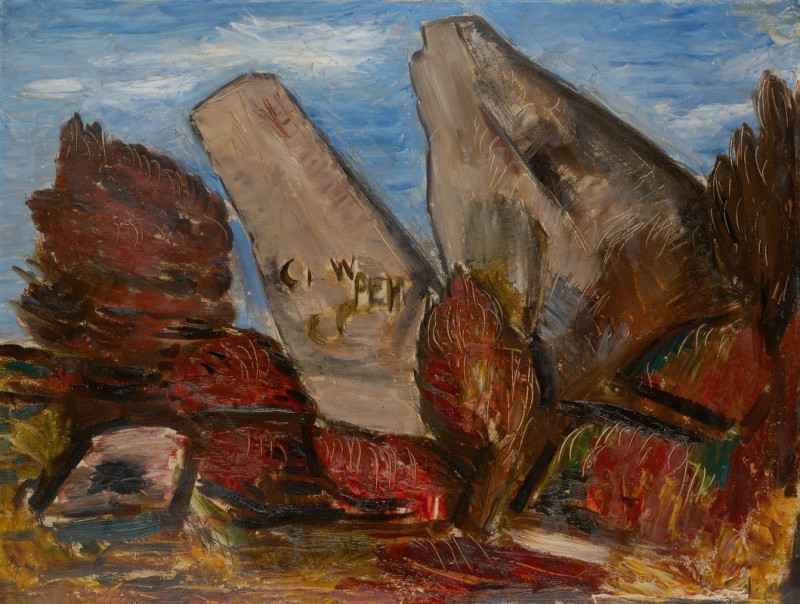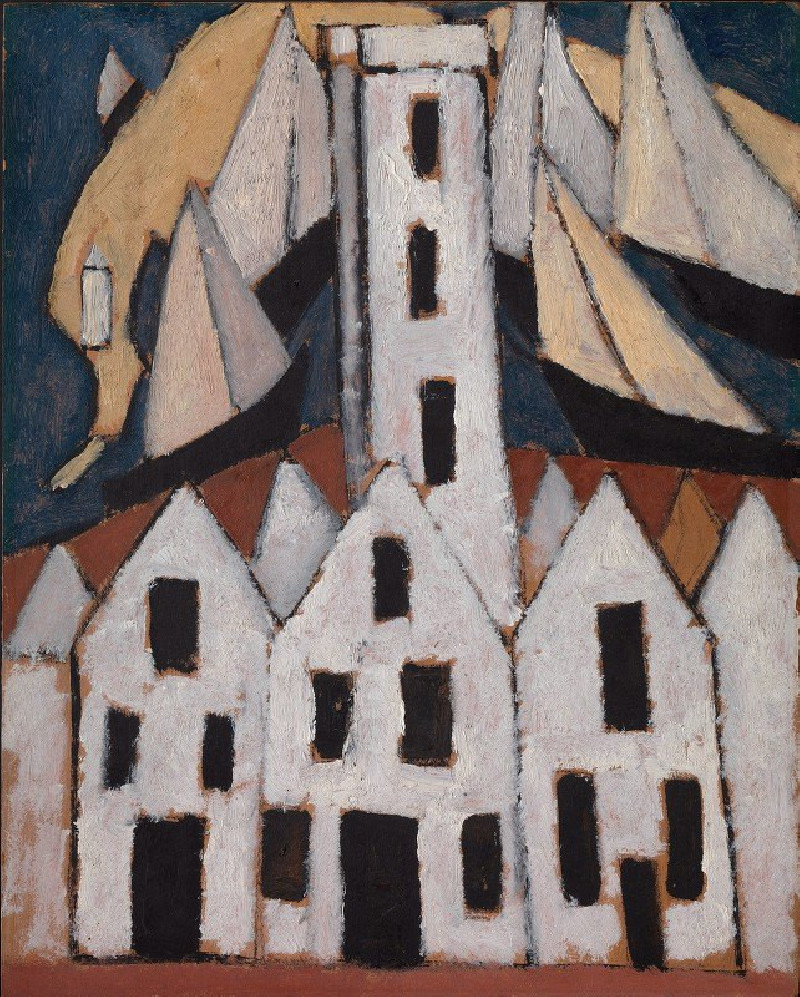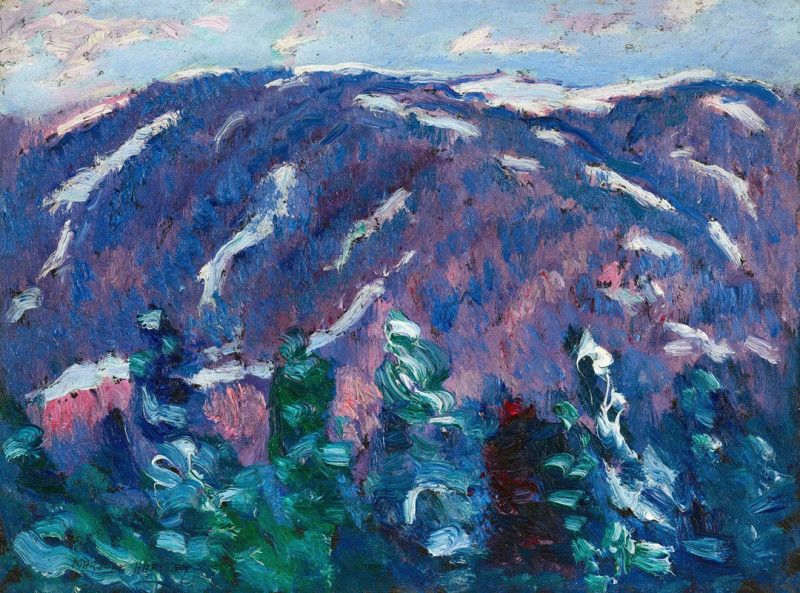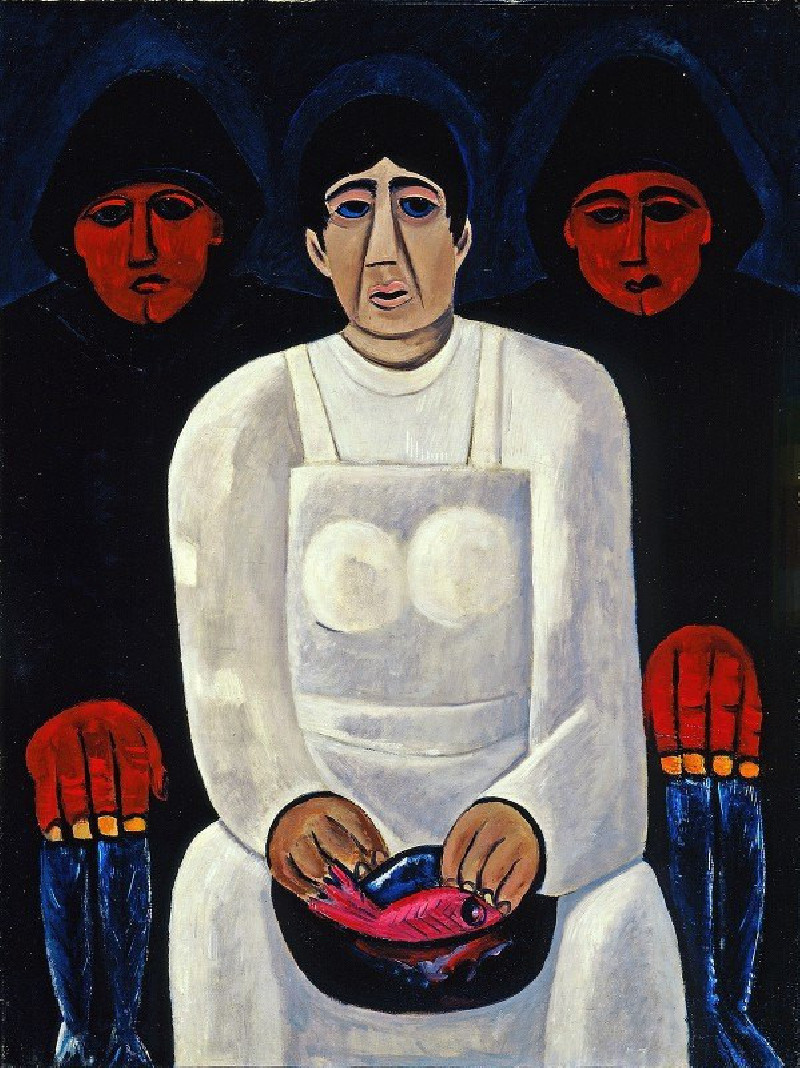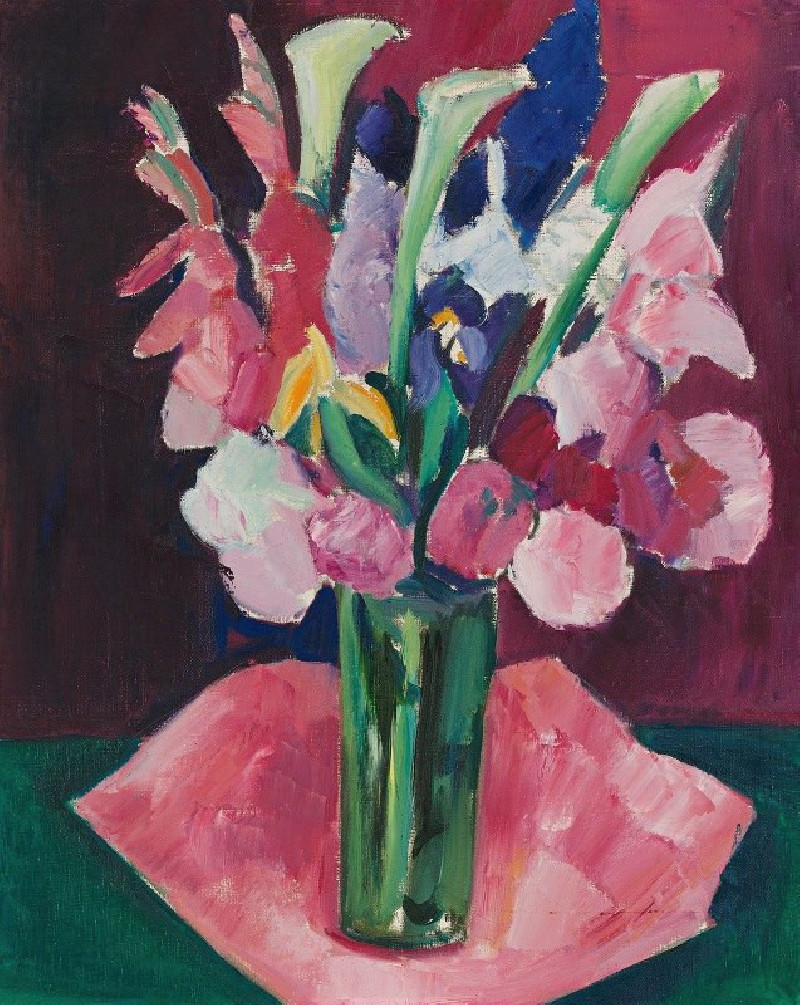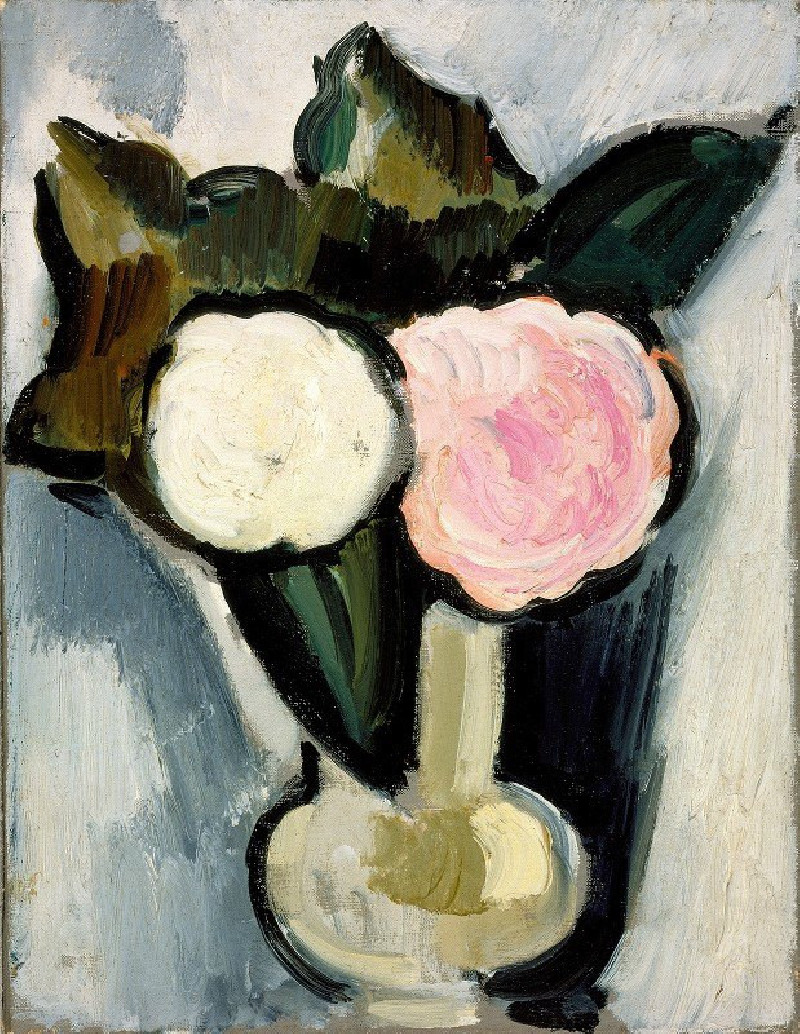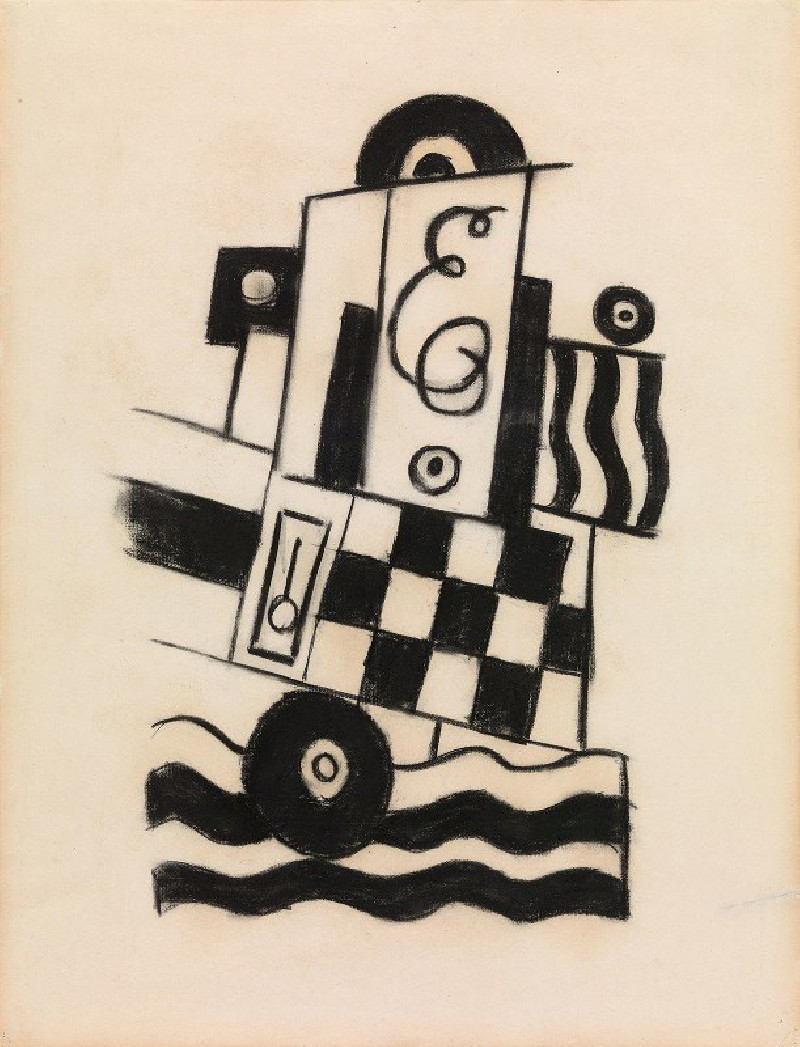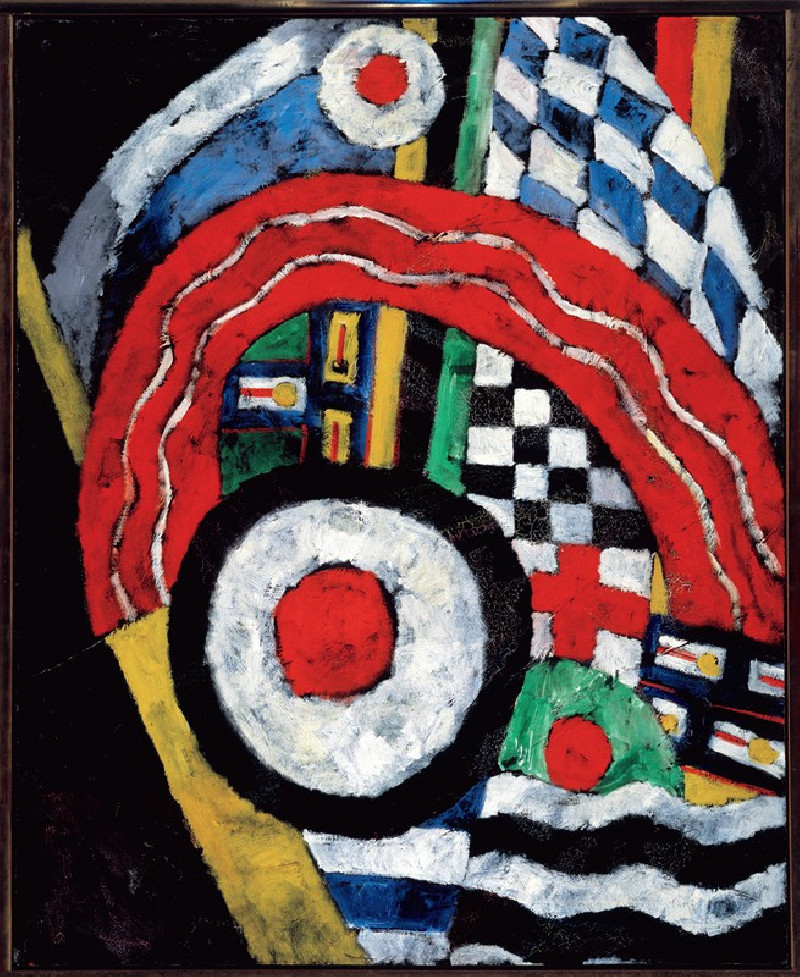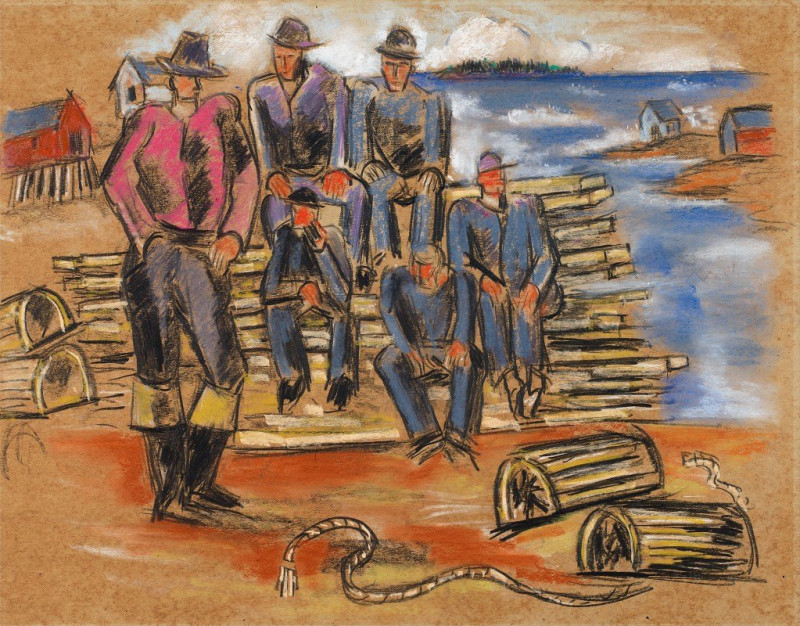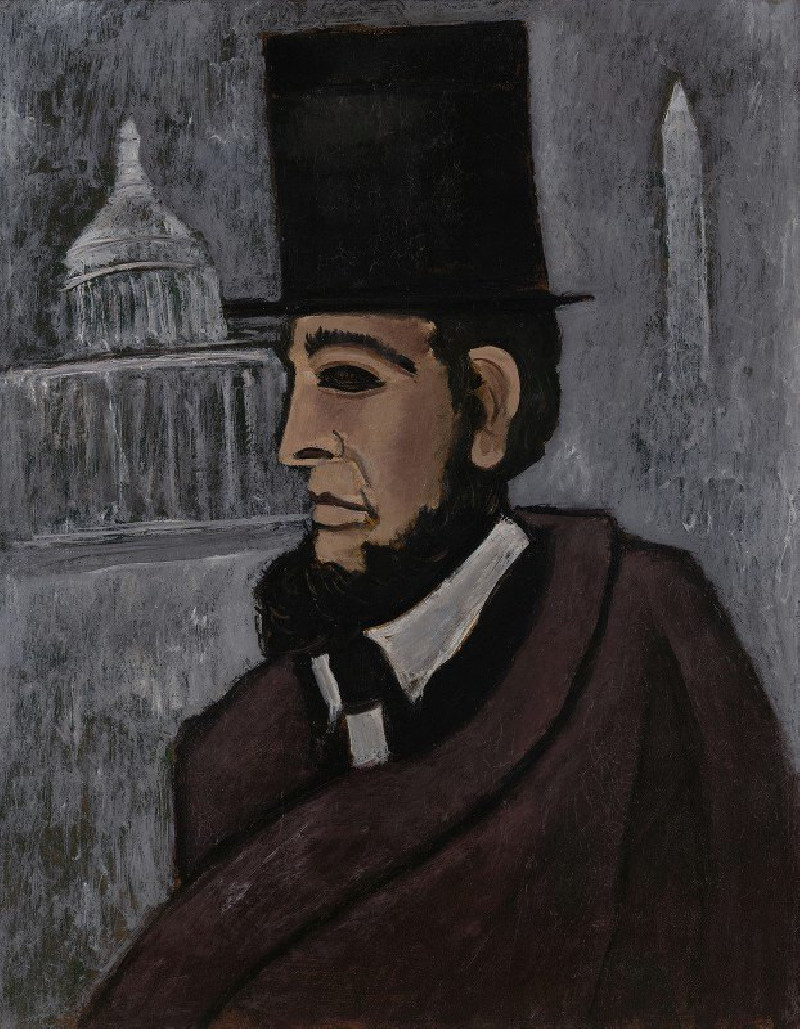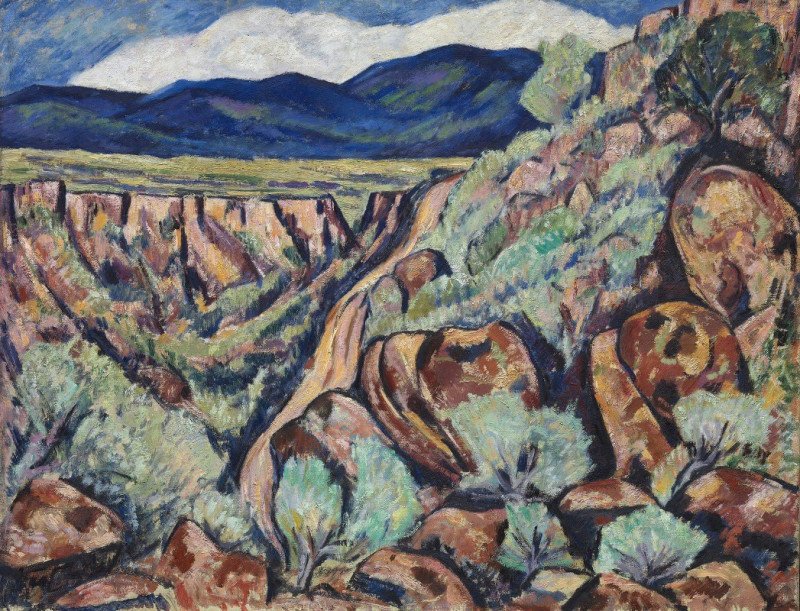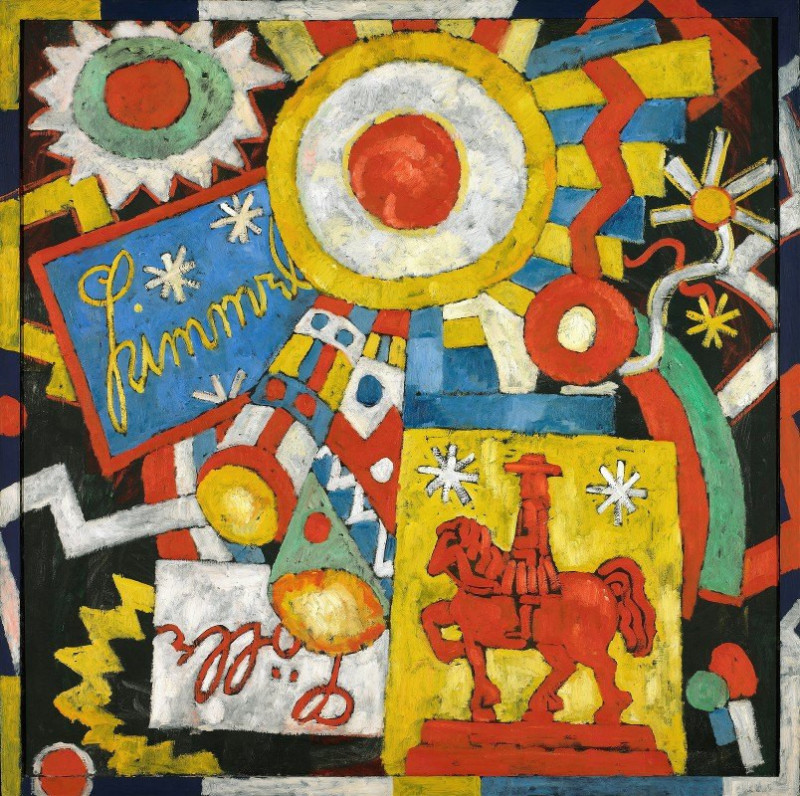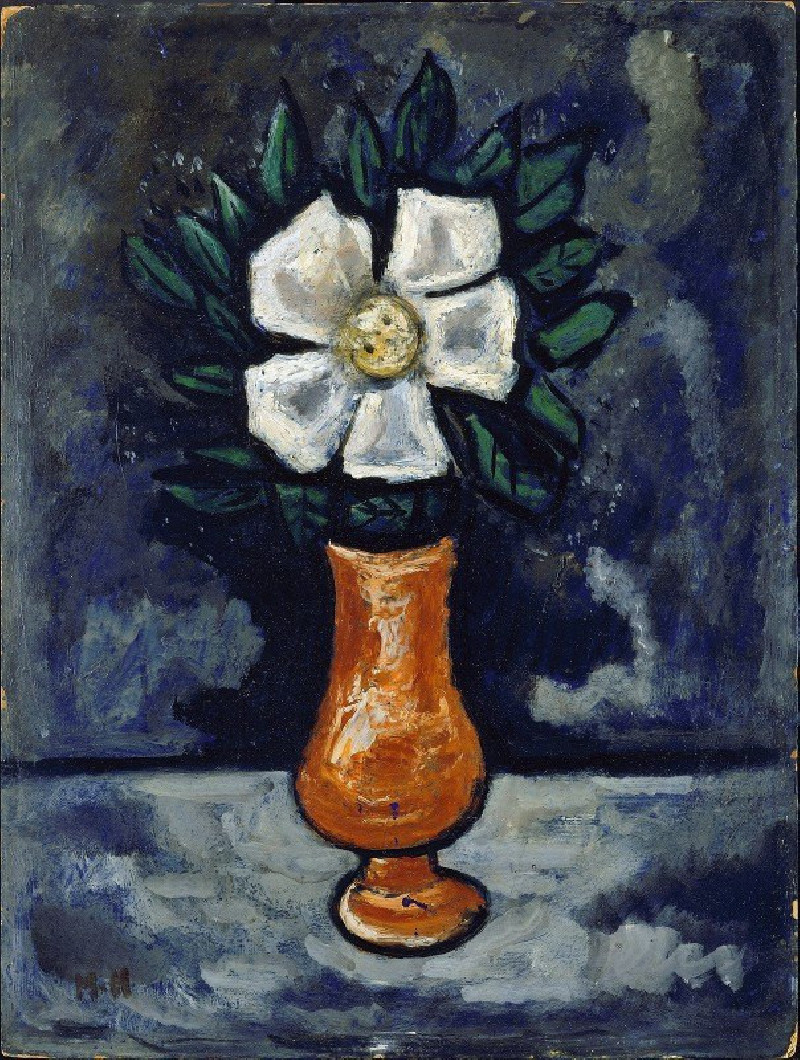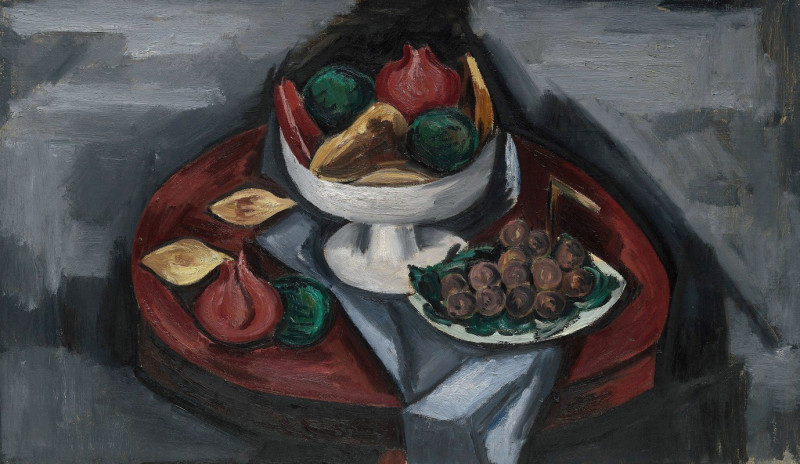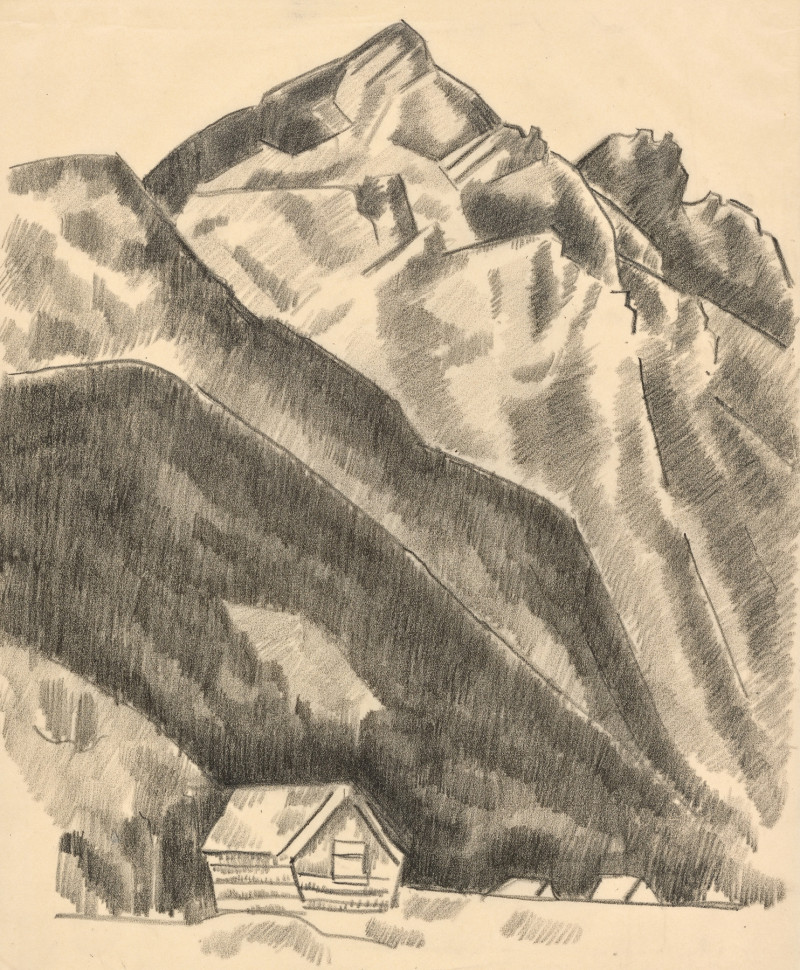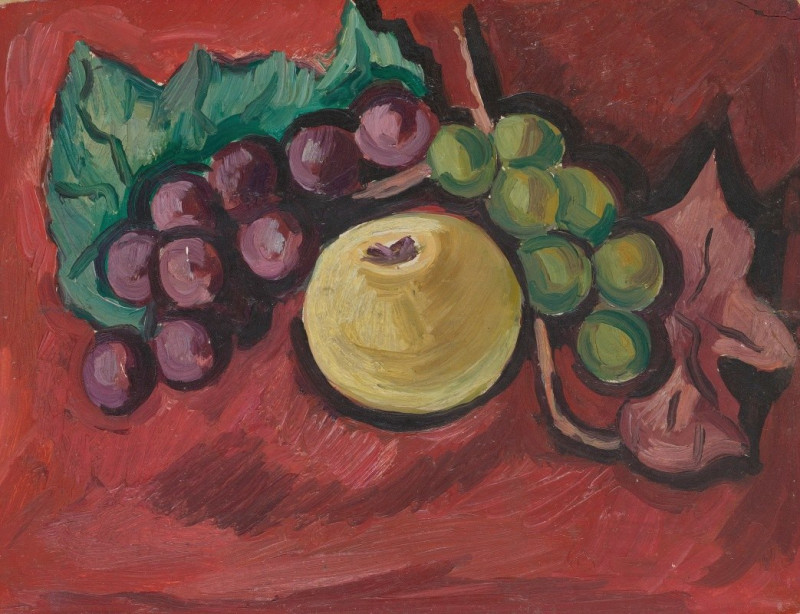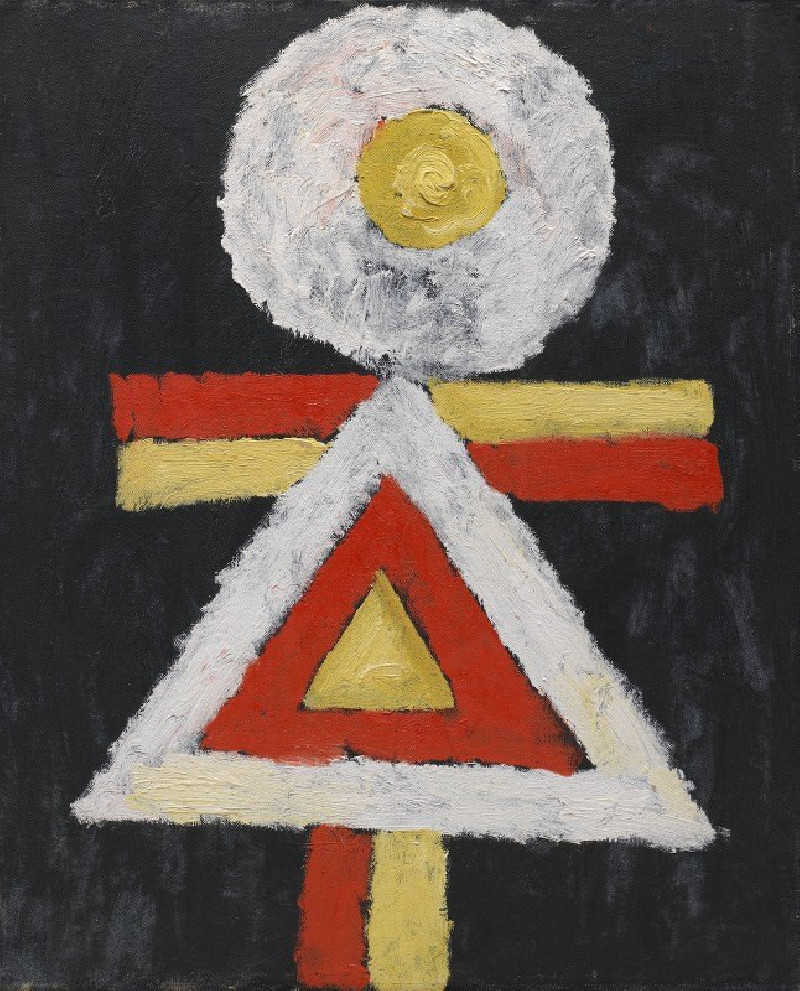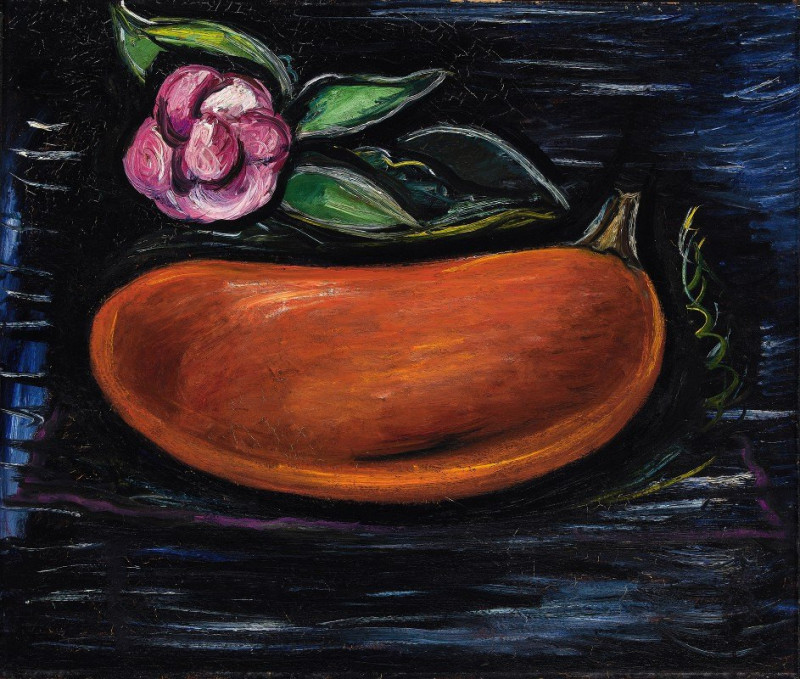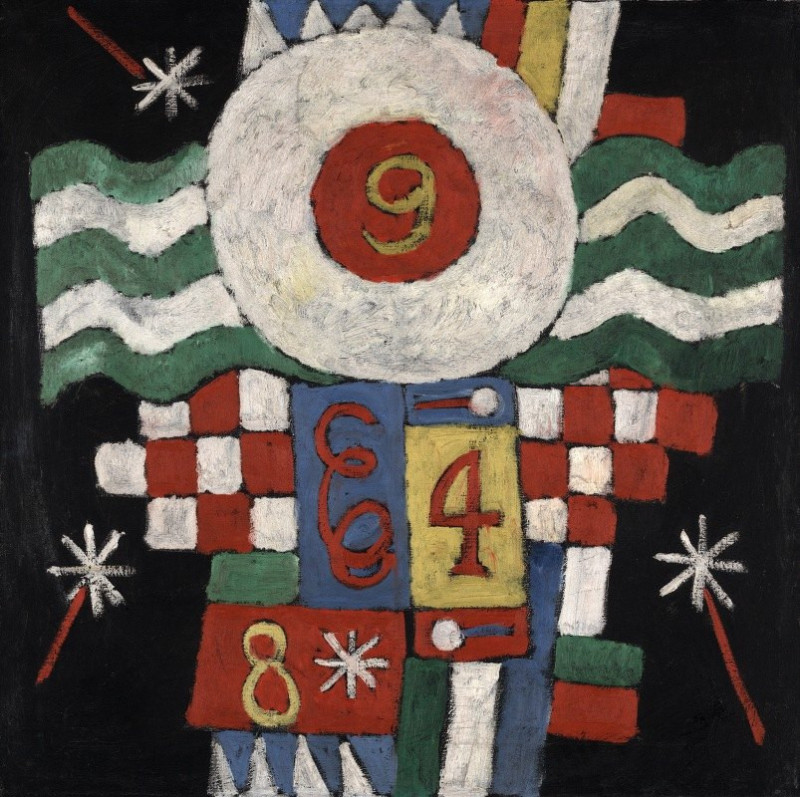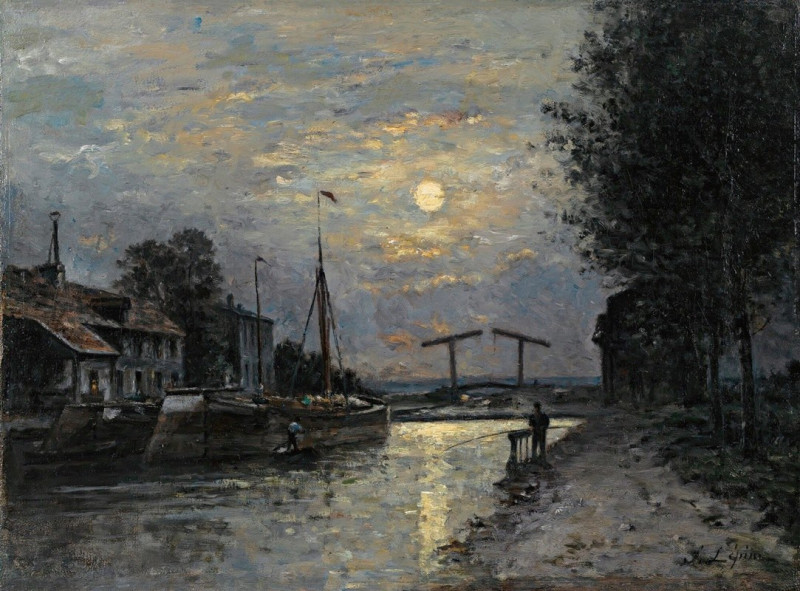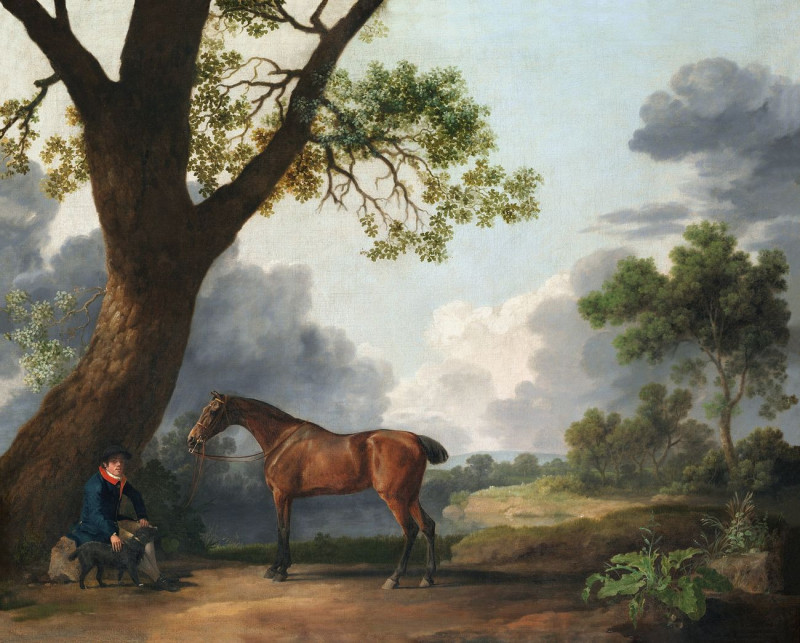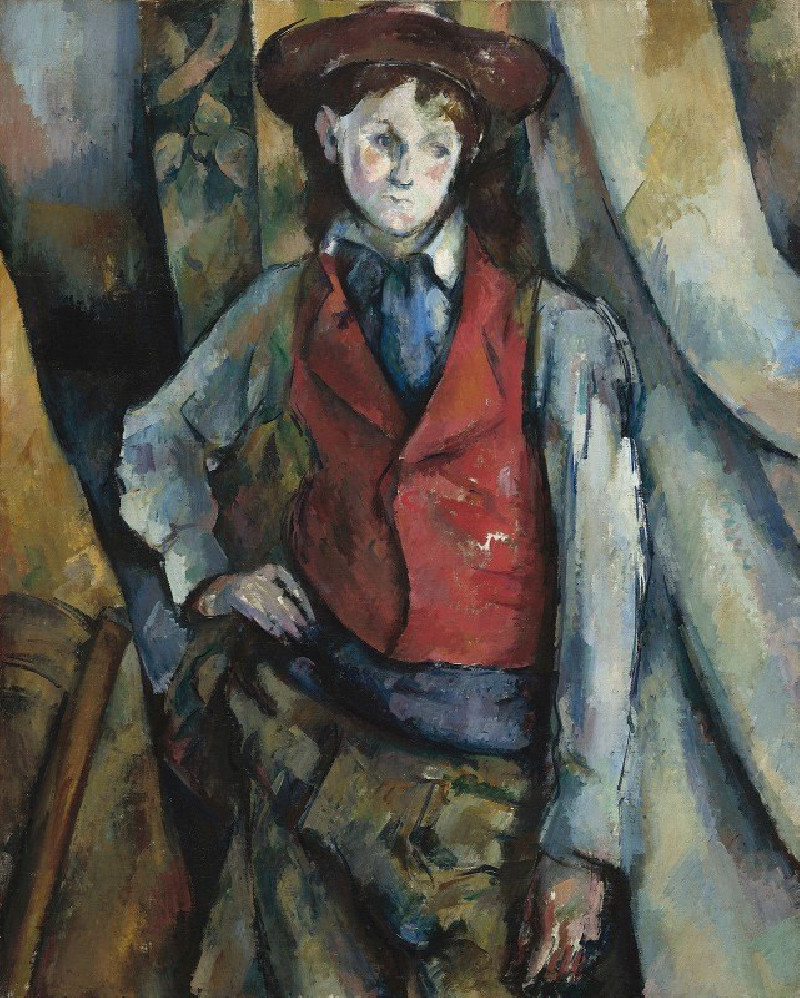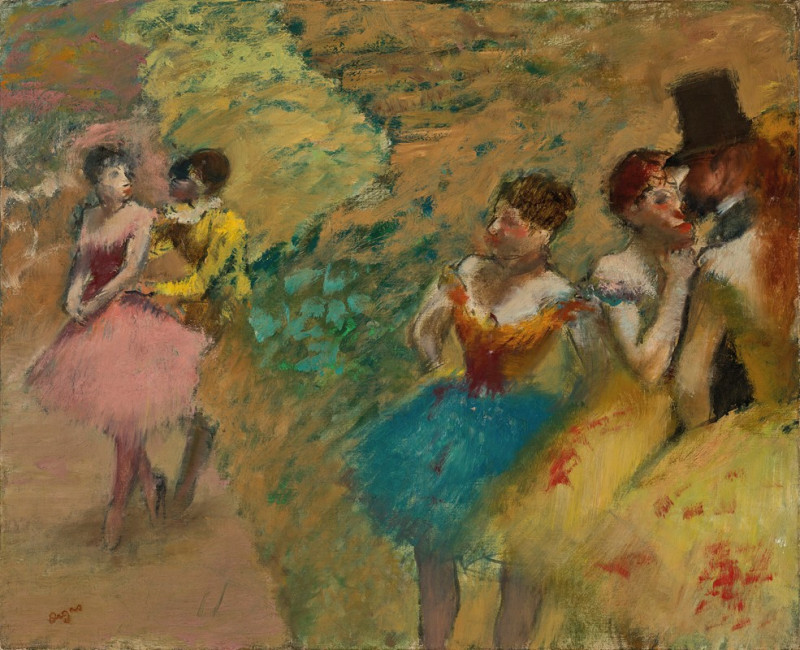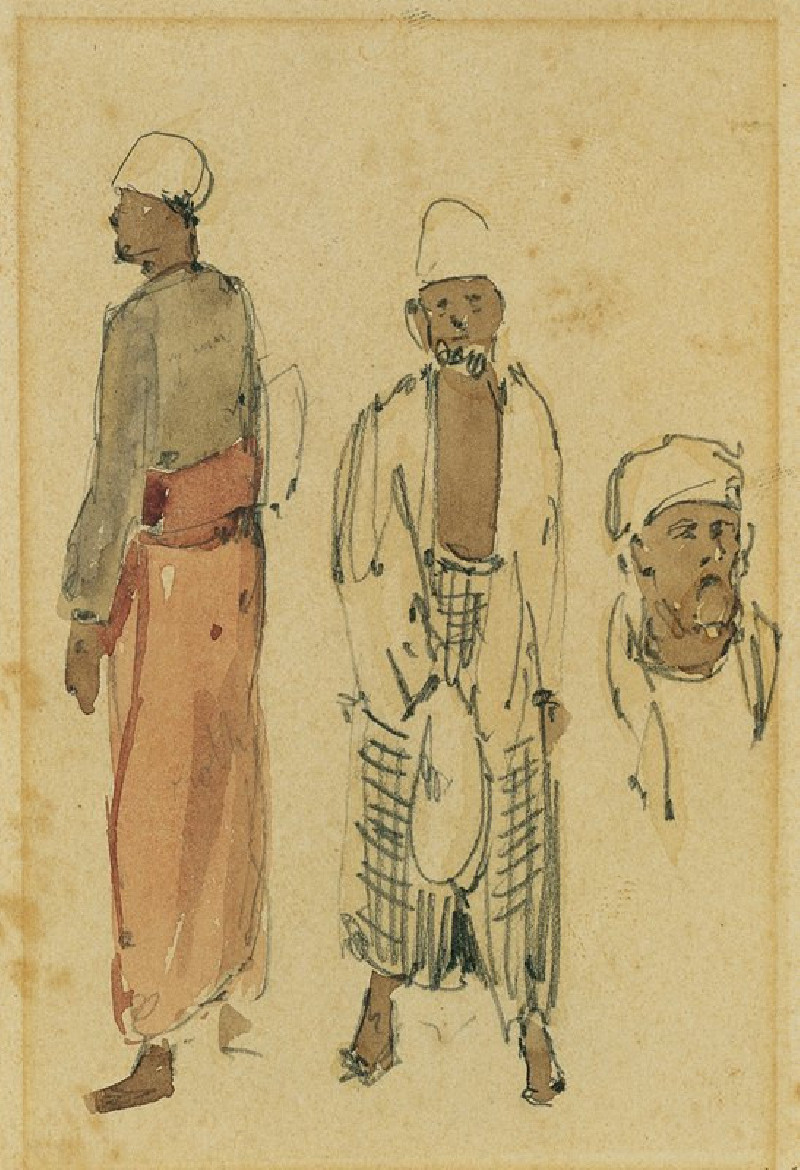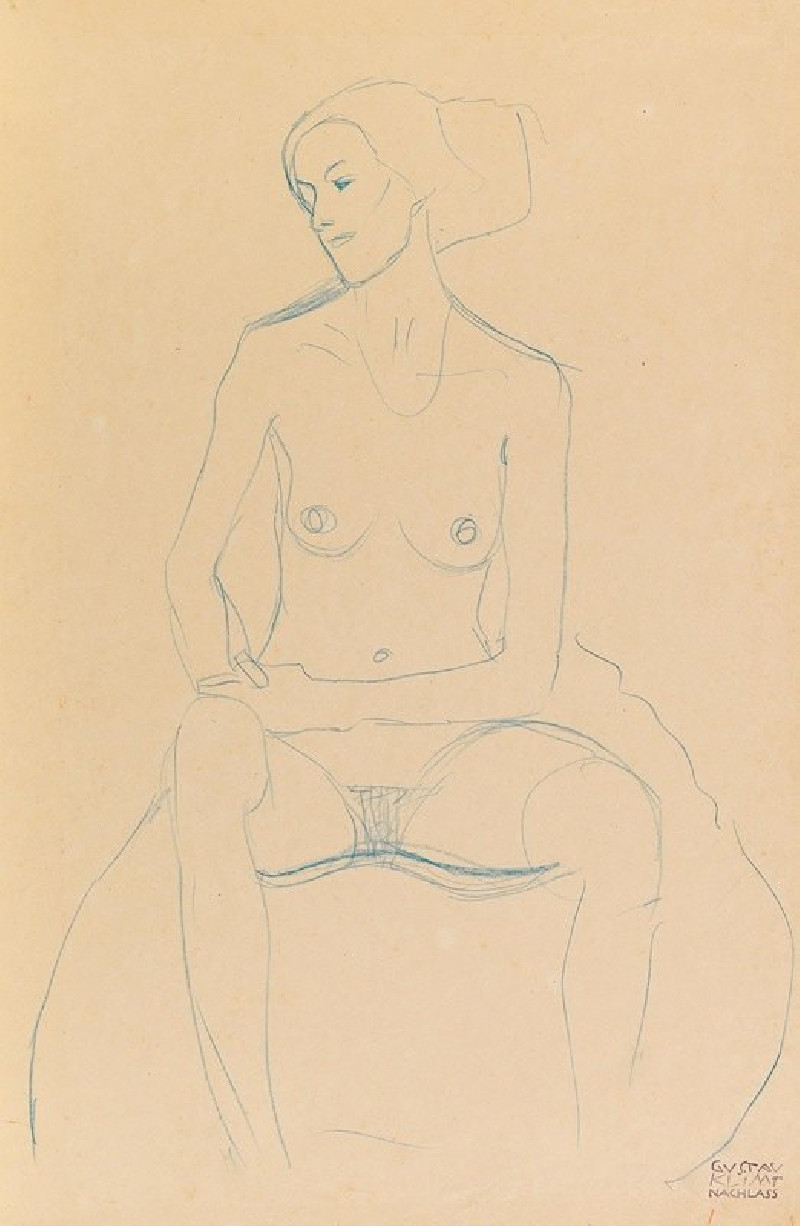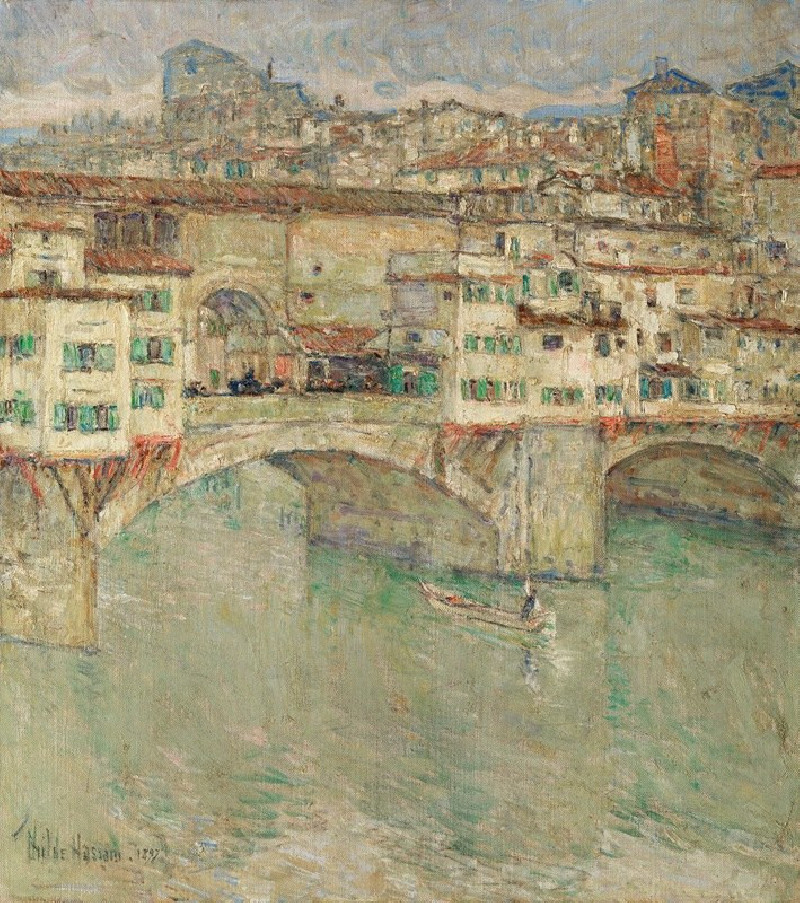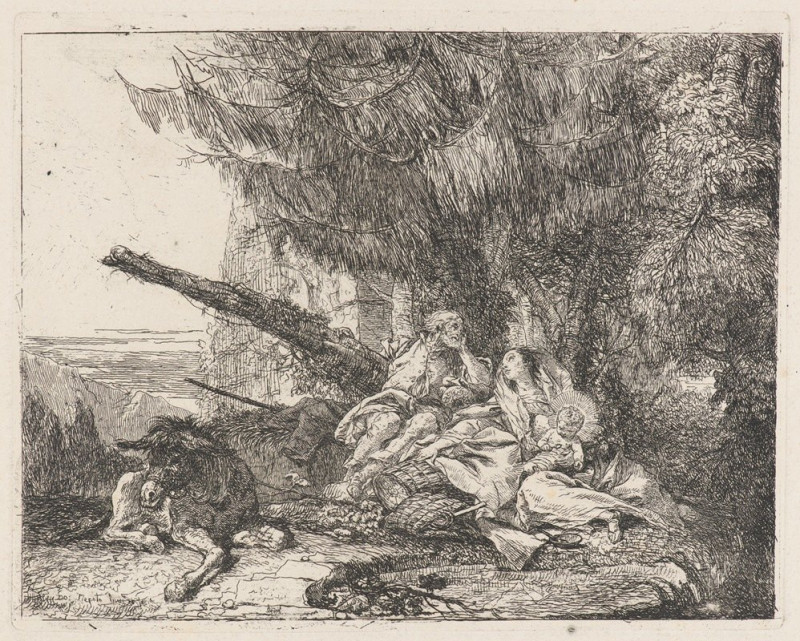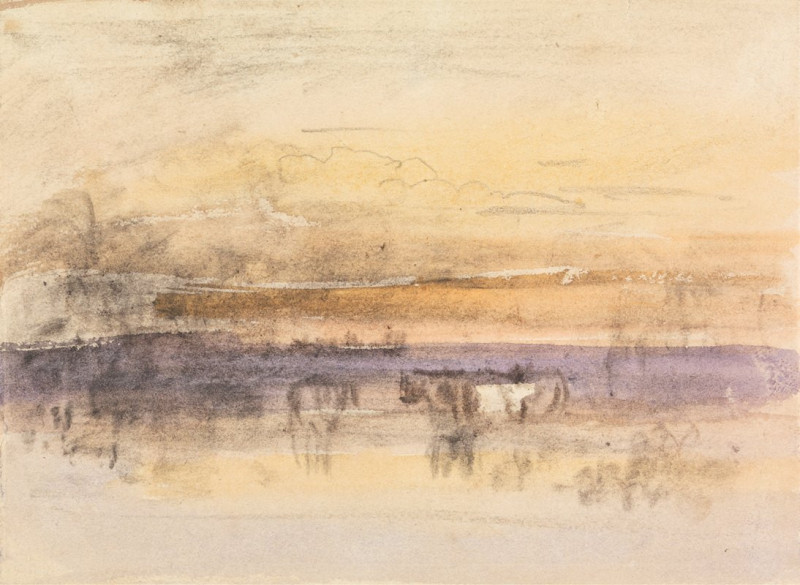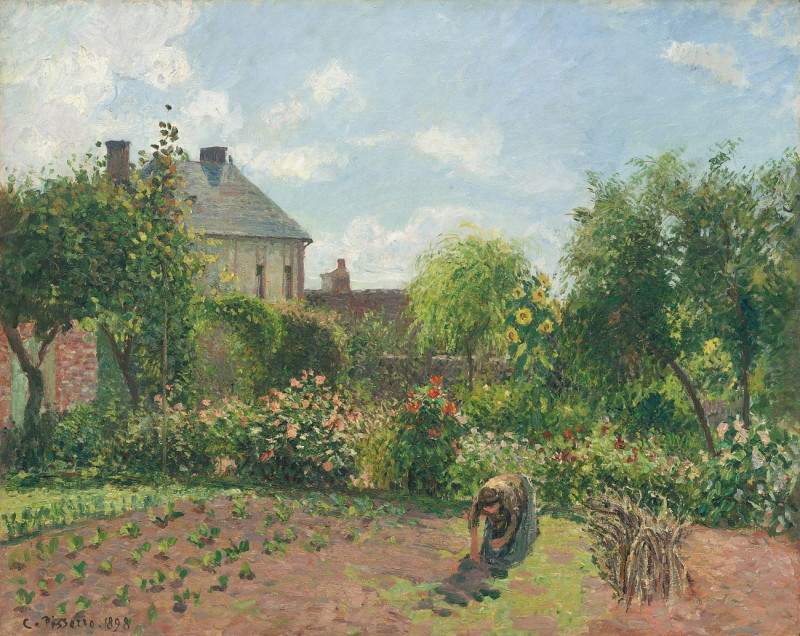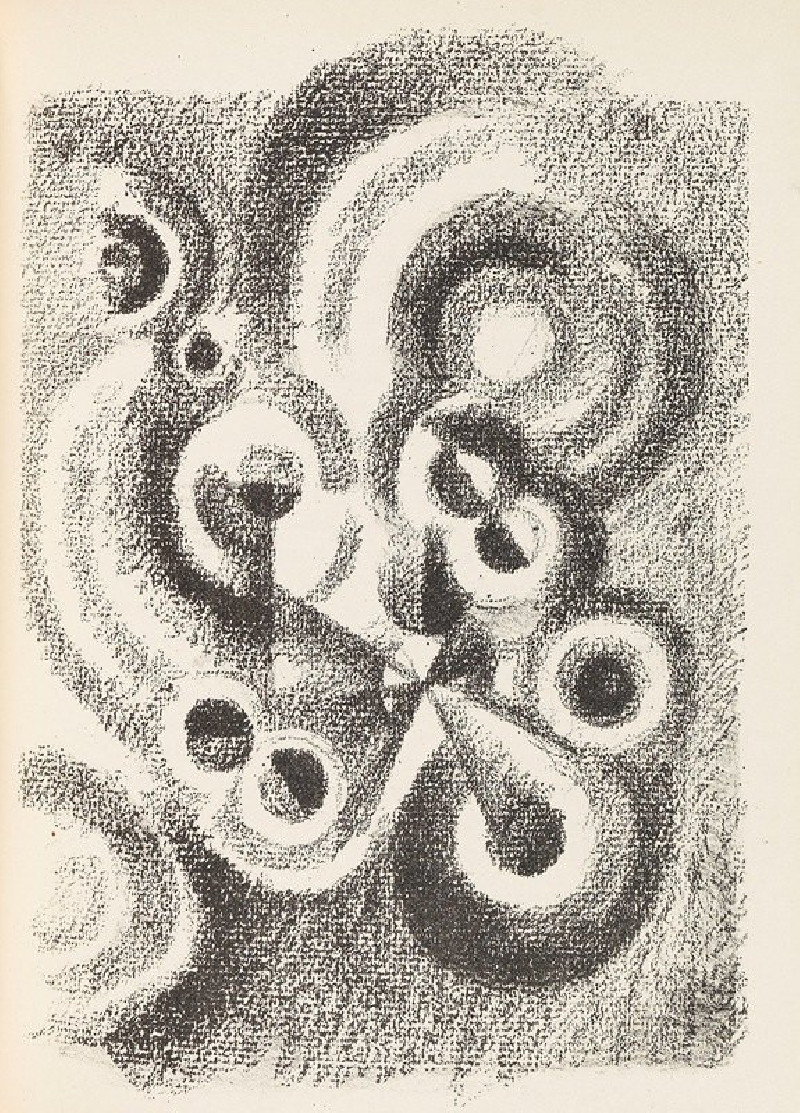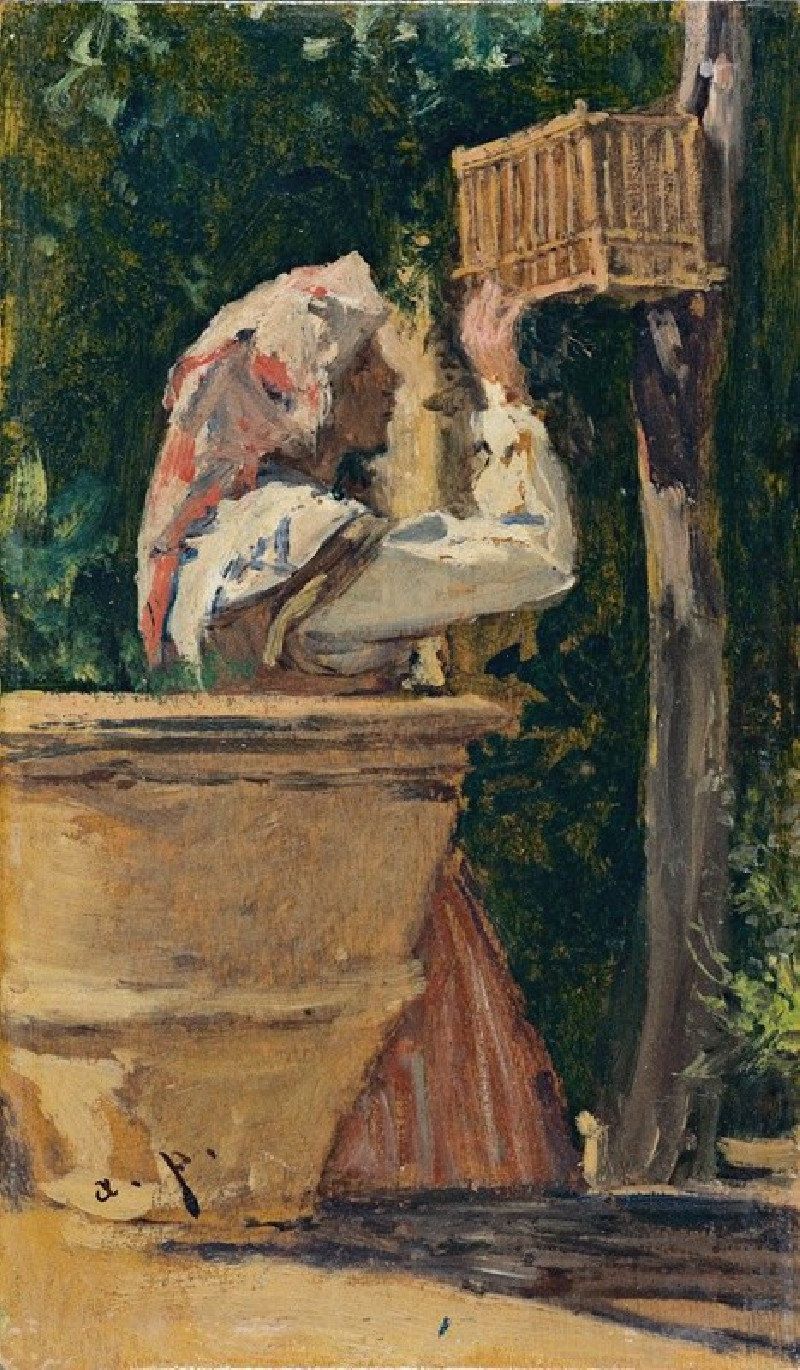Movement, Bermuda
Technique: Giclée quality print
Recommended by our customers
More about this artwork
The painting "Movement, Bermuda" by Marsden Hartley is a fascinating example of abstract art, where Hartley employs geometric shapes and a restricted color palette to evoke a sense of rhythm and dynamism. At first glance, you might notice the central, bold figure that dominates the canvas, which can be interpreted as a stylized vessel or a symbolic form.The background and the figure itself are rendered with patches of colors—black, white, beige, and shades of brown—and there’s a strong contrast between these colors that enhances the graphic quality of the composition. This intentional use of contrasting tones may be projecting the movement suggested by the title, as light and dark elements dynamically interplay.The top part of the central figure features a striking black circle on a peach-colored backdrop which stands out and draws the eye, potentially symbolizing a focal point or a 'window' into the essence of the painting. The lower portion features a segmented, almost cruciform shape that suggests a base or anchor, possibly representing stability or grounding contrary to the concept of movement.Given its abstract nature, this painting leaves a lot open to interpretation, where the viewer’s perspective might influence their understanding of movement and balance within the piece. The use of geometric abstraction may also relate to spiritual or emotive expressions, which were common themes in Hartley’s wider body of work.
Delivery
Returns
Marsden Hartley (1877–1943) is a Maine native and a leading American Modernist painter, along with his contemporaries, Arthur Dove and Georgia O’Keeffe. He is well-known for employing geometric abstraction as well as bold colors and lines. His paintings depicted imagery of nature, landscapes, figures, and still-life. Sponsored by Alfred Stieglitz, Hartley went to Europe in 1912, spending most of his time in Germany, where he met Gertrude Stein, Wassily Kandinsky, and Franz Marc. After returning to America in 1930, he reconnected with the New England of his childhood and started to portray the landscapes of New England in his paintings.




